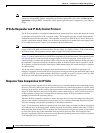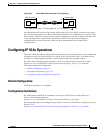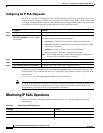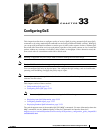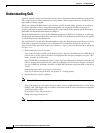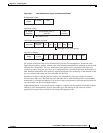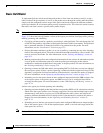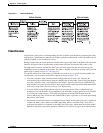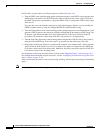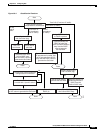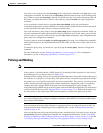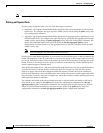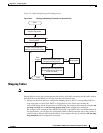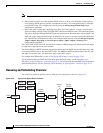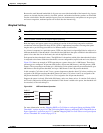
33-6
Catalyst 2960 and 2960-S Switch Software Configuration Guide
OL-8603-09
Chapter 33 Configuring QoS
Understanding QoS
For IP traffic, you have these classification options as shown in Figure 33-3:
• Trust the DSCP value in the incoming packet (configure the port to trust DSCP), and assign the same
DSCP value to the packet. The IETF defines the 6 most-significant bits of the 1-byte ToS field as
the DSCP. The priority represented by a particular DSCP value is configurable. DSCP values range
from 0 to 63.
For ports that are on the boundary between two QoS administrative domains, you can modify the
DSCP to another value by using the configurable DSCP-to-DSCP-mutation map.
• Trust the IP precedence value in the incoming packet (configure the port to trust IP precedence), and
generate a DSCP value for the packet by using the configurable IP-precedence-to-DSCP map. The
IP Version 4 specification defines the 3 most-significant bits of the 1-byte ToS field as the IP
precedence. IP precedence values range from 0 for low priority to 7 for high priority.
• Trust the CoS value (if present) in the incoming packet, and generate a DSCP value for the packet by
using the CoS-to-DSCP map. If the CoS value is not present, use the default port CoS value.
• Perform the classification based on a configured IP standard or an extended ACL, which examines
various fields in the IP header. If no ACL is configured, the packet is assigned 0 as the DSCP and
CoS values, which means best-effort traffic. Otherwise, the policy-map action specifies a DSCP or
CoS value to assign to the incoming frame.
For information on the maps described in this section, see the “Mapping Tables” section on page 33-11.
For configuration information on port trust states, see the “Configuring Classification Using Port Trust
States” section on page 33-40.
After classification, the packet is sent to the policing, marking, and the ingress queueing and scheduling
stages.
Note Catalyst 2960-S switches do not support ingress queueing.



